A Comprehensive Teaching Plan: Treating Anxiety Among the Elderly
VerifiedAdded on 2023/06/11
|13
|703
|94
Presentation
AI Summary
This presentation provides a teaching plan aimed at educating caregivers on how to prevent and manage anxiety among the elderly. The plan includes assessing the condition, establishing the type of anxiety disorder, explaining the condition to the patient, and considering mental health across the illness/injury continuum. It emphasizes focusing on the elderly population and using non-medical treatments as supplements to traditional medical care, such as exercise, diet changes, hypnosis, and home-based therapy. The goal is to provide caregivers with a comprehensive understanding of how to support elderly patients experiencing anxiety, ultimately improving their mental health and overall well-being. The document is available on Desklib, a platform offering various study tools for students.
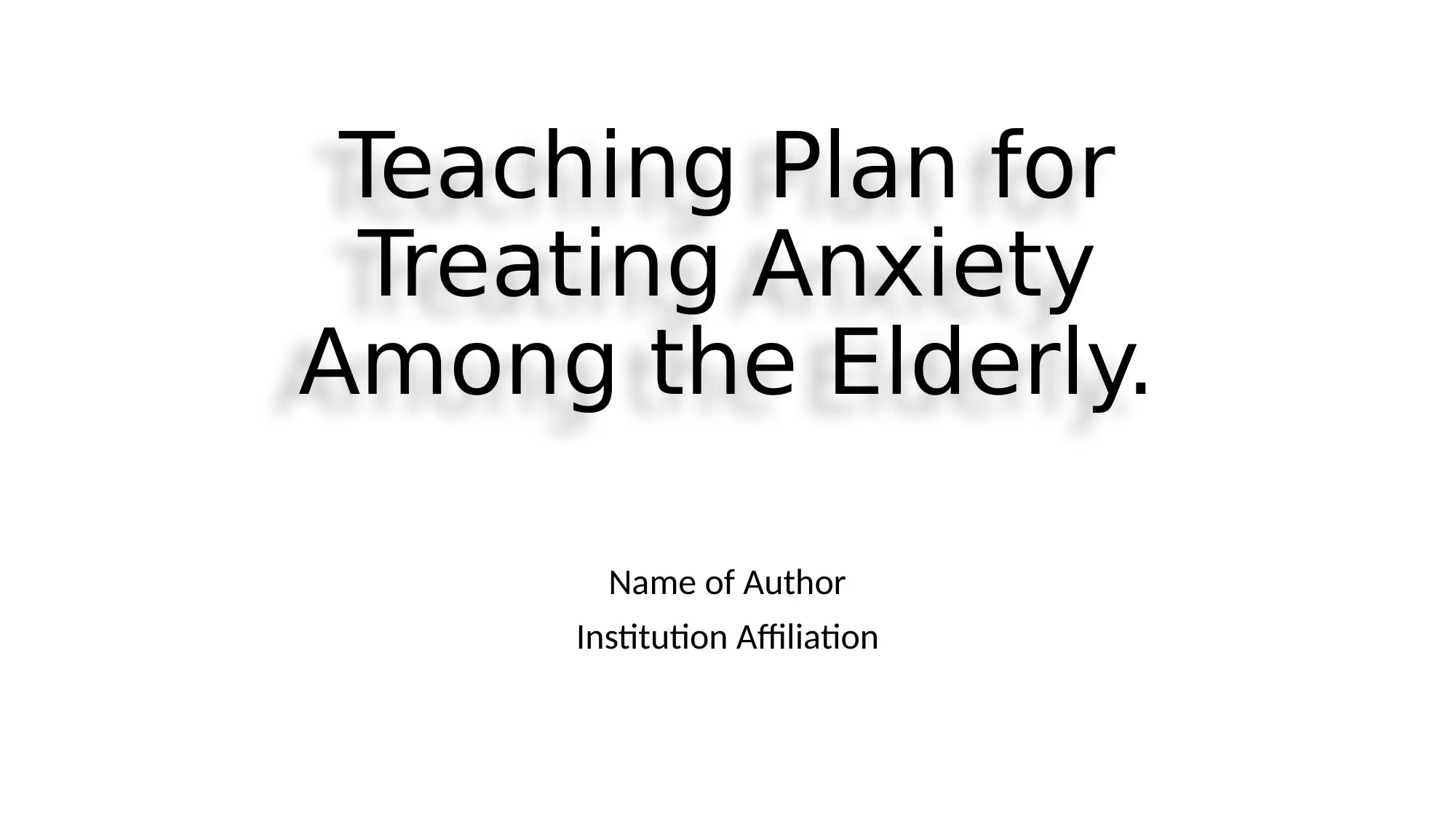
Teaching Plan for
Treating Anxiety
Among the Elderly.
Name of Author
Institution Affiliation
Treating Anxiety
Among the Elderly.
Name of Author
Institution Affiliation
Paraphrase This Document
Need a fresh take? Get an instant paraphrase of this document with our AI Paraphraser
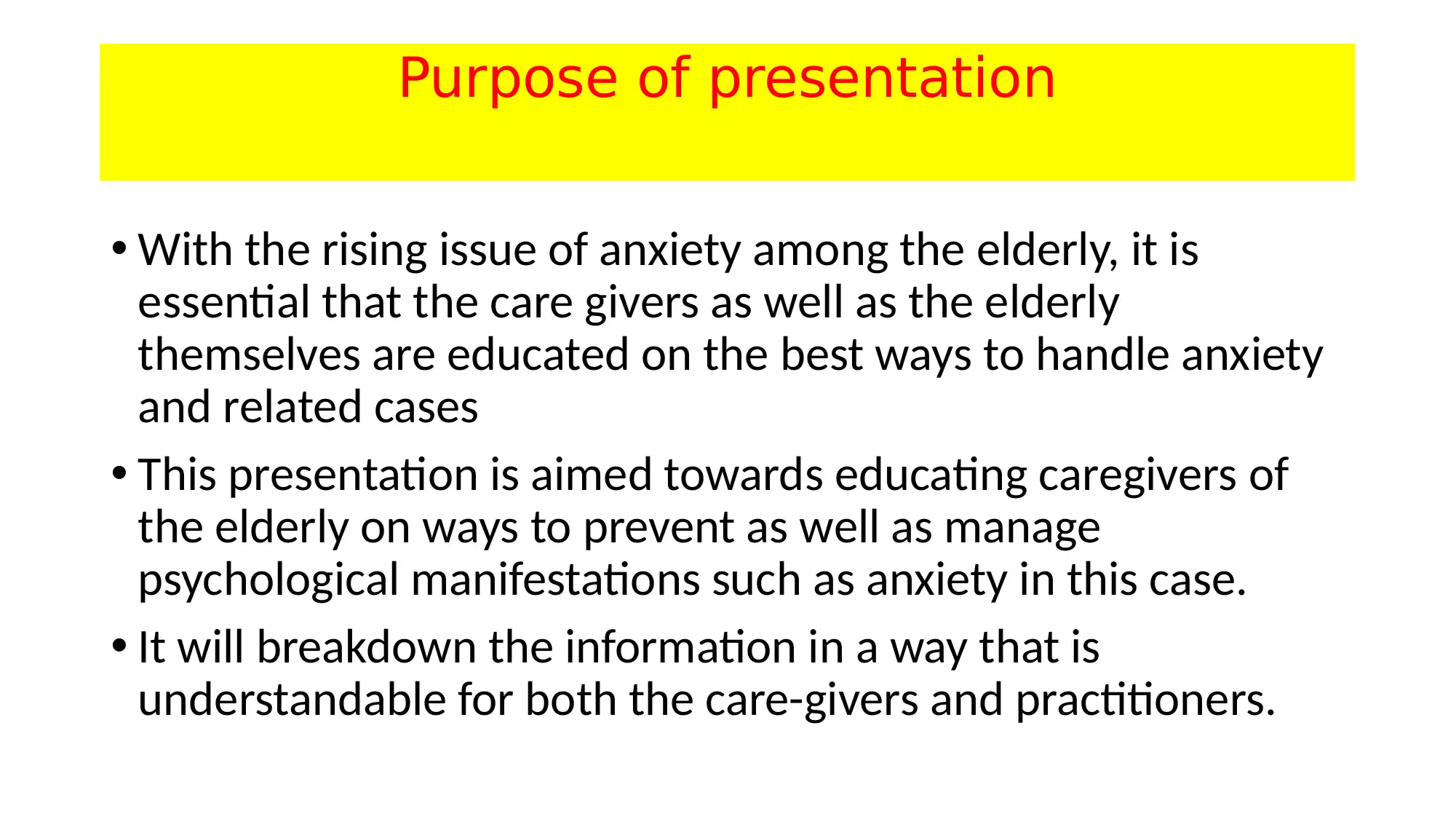
Purpose of presentation
• With the rising issue of anxiety among the elderly, it is
essential that the care givers as well as the elderly
themselves are educated on the best ways to handle anxiety
and related cases
• This presentation is aimed towards educating caregivers of
the elderly on ways to prevent as well as manage
psychological manifestations such as anxiety in this case.
• It will breakdown the information in a way that is
understandable for both the care-givers and practitioners.
• With the rising issue of anxiety among the elderly, it is
essential that the care givers as well as the elderly
themselves are educated on the best ways to handle anxiety
and related cases
• This presentation is aimed towards educating caregivers of
the elderly on ways to prevent as well as manage
psychological manifestations such as anxiety in this case.
• It will breakdown the information in a way that is
understandable for both the care-givers and practitioners.
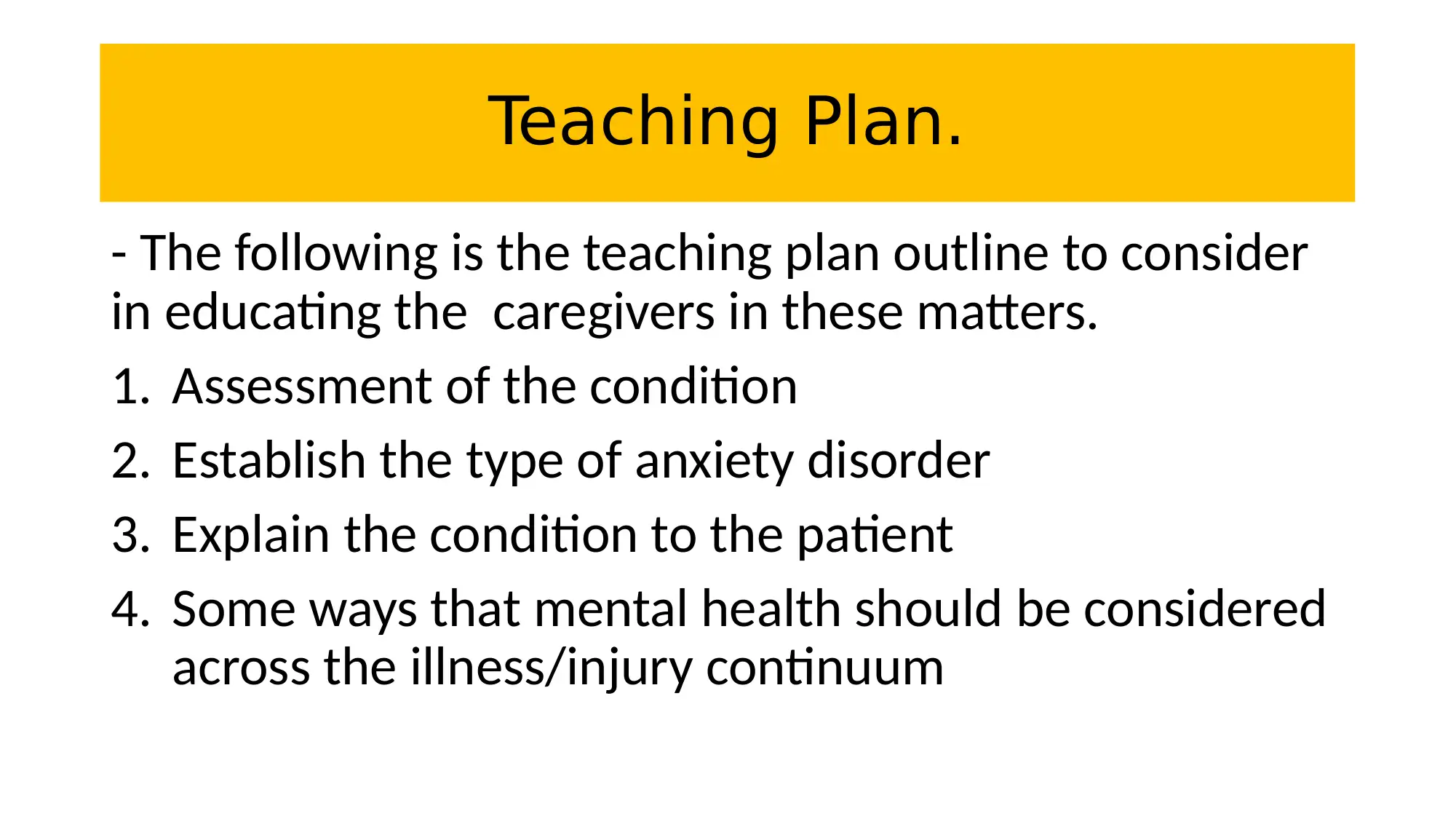
Teaching Plan.
- The following is the teaching plan outline to consider
in educating the caregivers in these matters.
1. Assessment of the condition
2. Establish the type of anxiety disorder
3. Explain the condition to the patient
4. Some ways that mental health should be considered
across the illness/injury continuum
- The following is the teaching plan outline to consider
in educating the caregivers in these matters.
1. Assessment of the condition
2. Establish the type of anxiety disorder
3. Explain the condition to the patient
4. Some ways that mental health should be considered
across the illness/injury continuum
⊘ This is a preview!⊘
Do you want full access?
Subscribe today to unlock all pages.

Trusted by 1+ million students worldwide
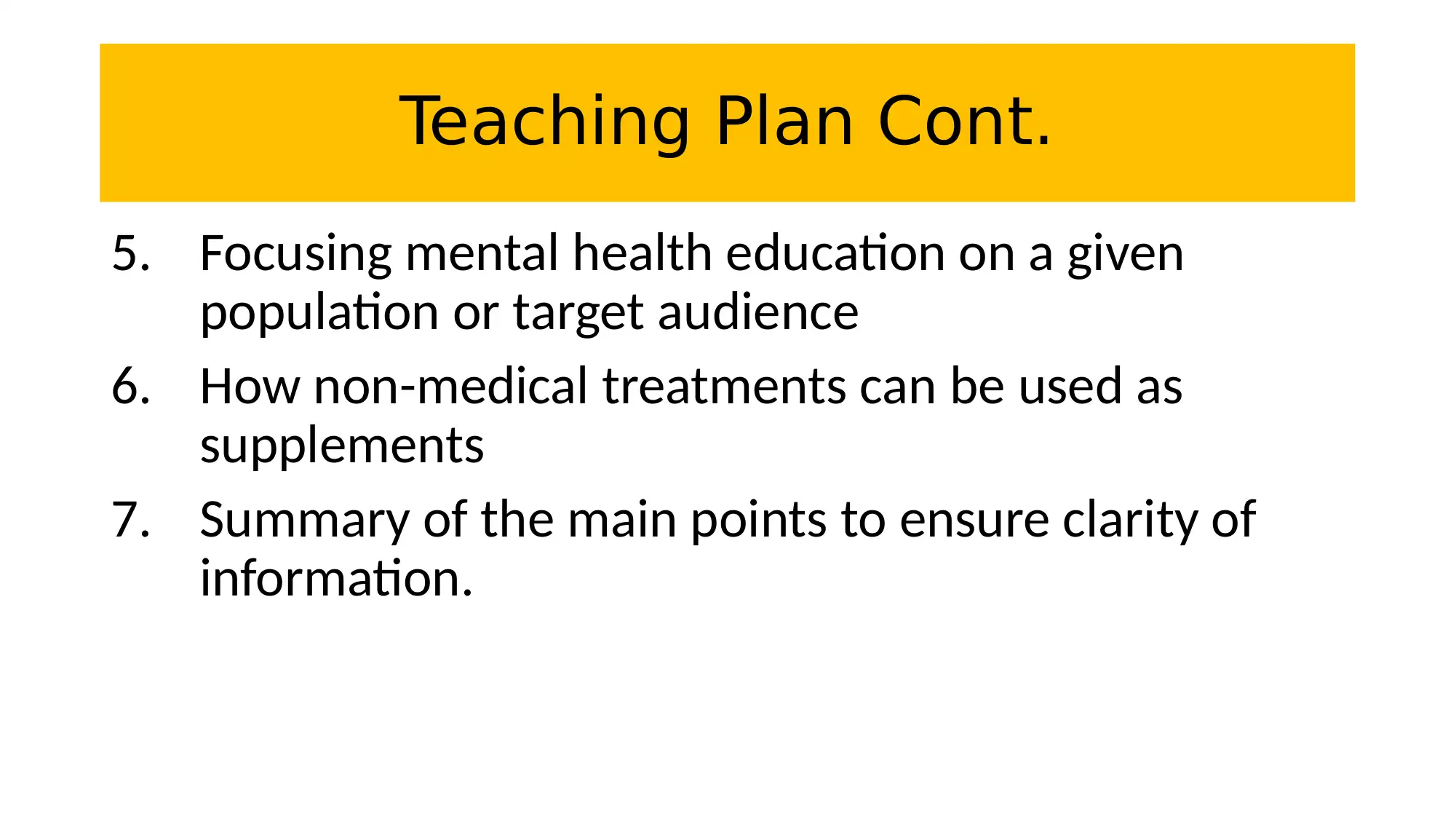
Teaching Plan Cont.
5. Focusing mental health education on a given
population or target audience
6. How non-medical treatments can be used as
supplements
7. Summary of the main points to ensure clarity of
information.
5. Focusing mental health education on a given
population or target audience
6. How non-medical treatments can be used as
supplements
7. Summary of the main points to ensure clarity of
information.
Paraphrase This Document
Need a fresh take? Get an instant paraphrase of this document with our AI Paraphraser
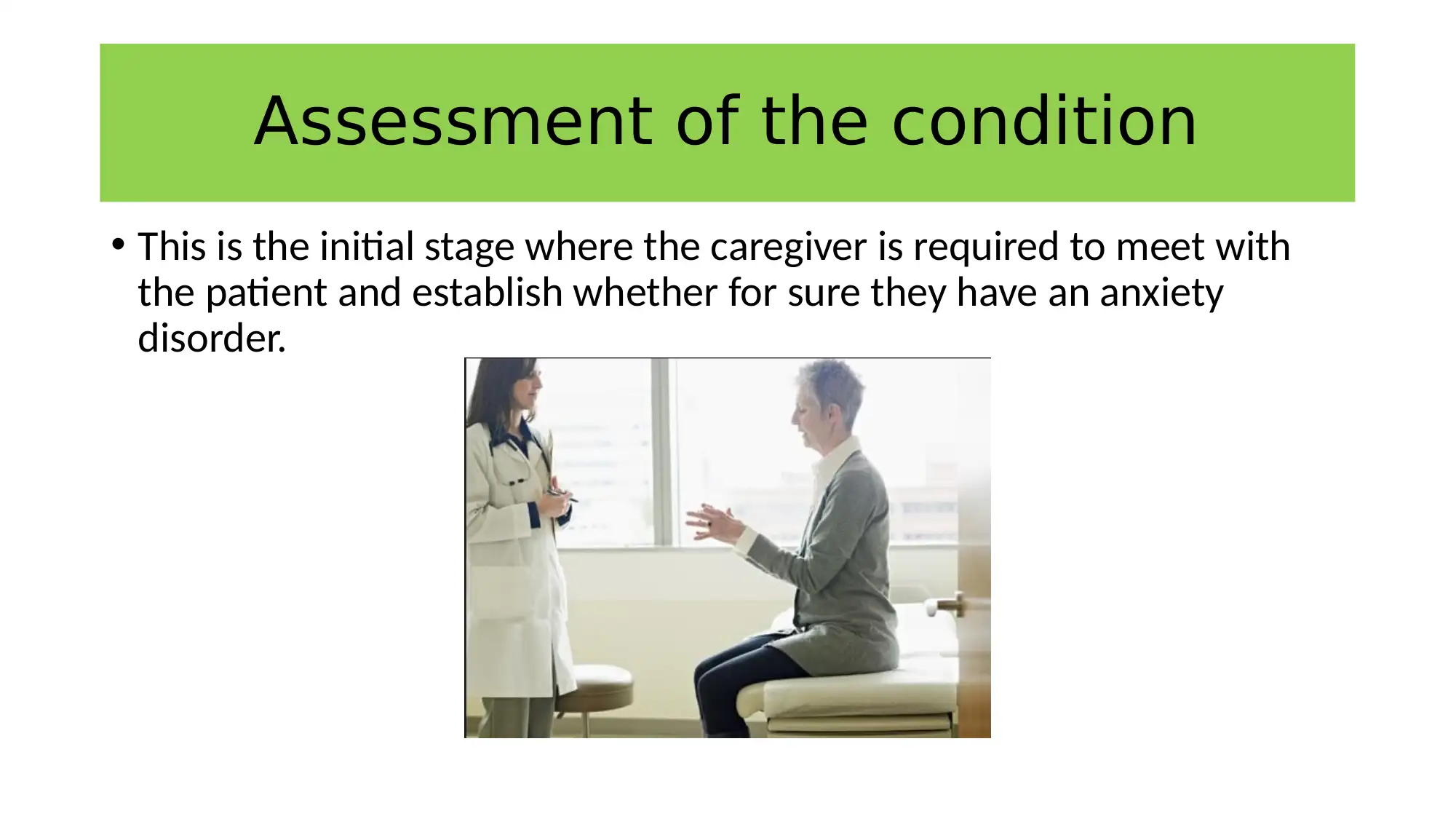
Assessment of the condition
• This is the initial stage where the caregiver is required to meet with
the patient and establish whether for sure they have an anxiety
disorder.
• This is the initial stage where the caregiver is required to meet with
the patient and establish whether for sure they have an anxiety
disorder.
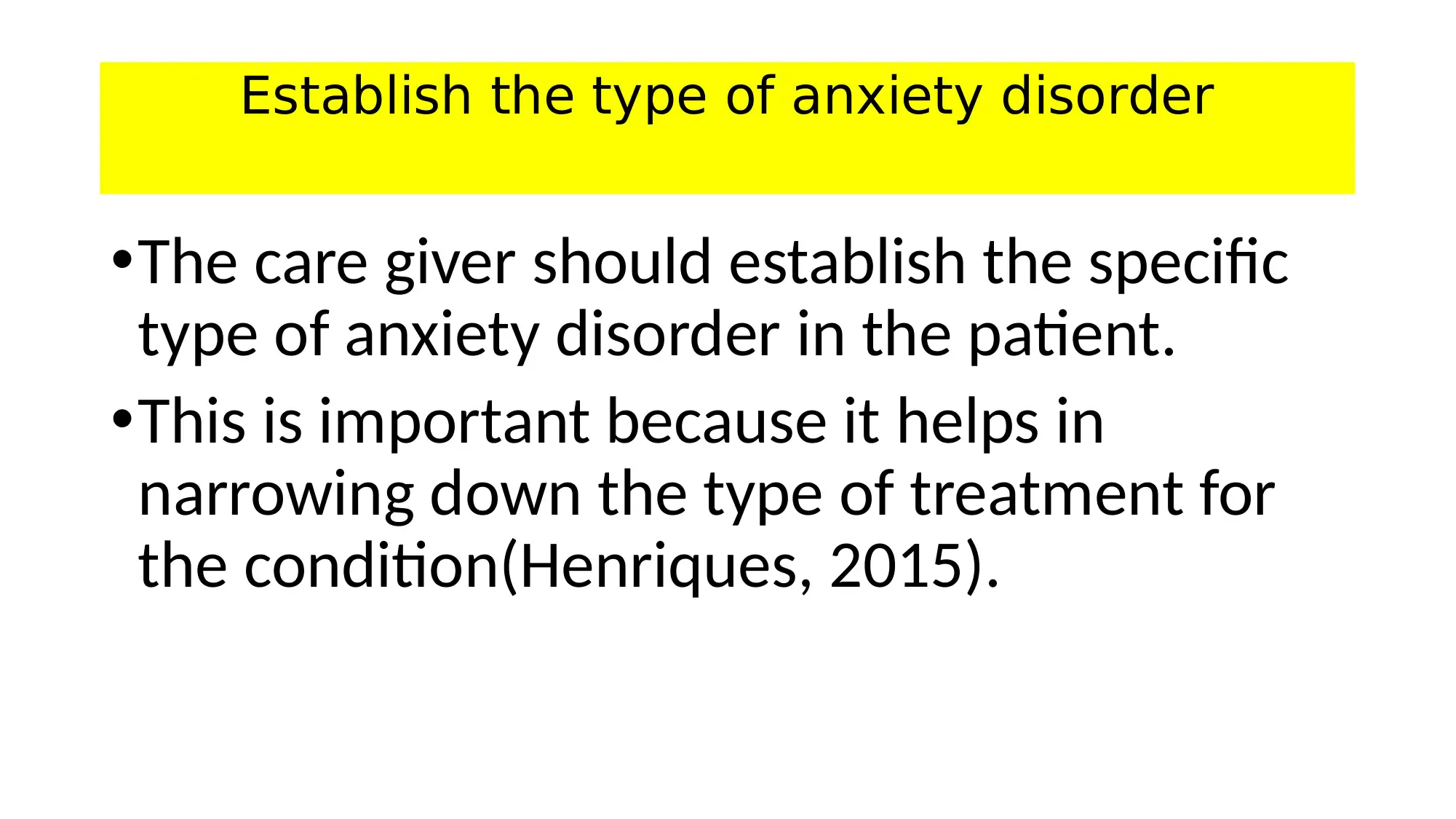
Establish the type of anxiety disorder
•The care giver should establish the specific
type of anxiety disorder in the patient.
•This is important because it helps in
narrowing down the type of treatment for
the condition(Henriques, 2015).
•The care giver should establish the specific
type of anxiety disorder in the patient.
•This is important because it helps in
narrowing down the type of treatment for
the condition(Henriques, 2015).
⊘ This is a preview!⊘
Do you want full access?
Subscribe today to unlock all pages.

Trusted by 1+ million students worldwide

Establish the type of Anxiety
Disorder Cont.
•In addition, establishing the type of anxiety
disorder helps in giving the right kind of
mediation that would be required by the
elderly.
•Doing so could make a significant difference
in caring for a patient.
Disorder Cont.
•In addition, establishing the type of anxiety
disorder helps in giving the right kind of
mediation that would be required by the
elderly.
•Doing so could make a significant difference
in caring for a patient.
Paraphrase This Document
Need a fresh take? Get an instant paraphrase of this document with our AI Paraphraser
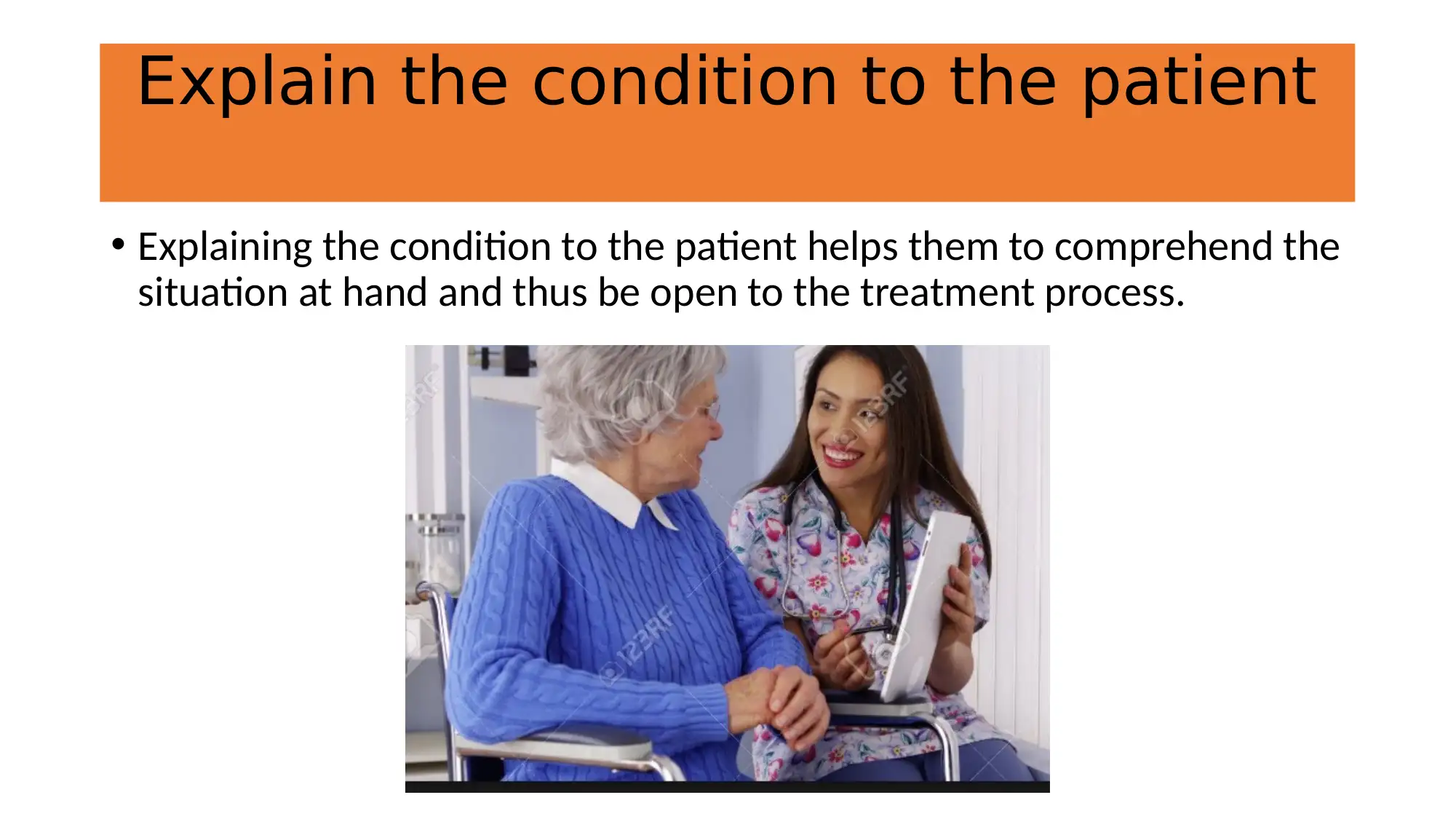
Explain the condition to the patient
• Explaining the condition to the patient helps them to comprehend the
situation at hand and thus be open to the treatment process.
• Explaining the condition to the patient helps them to comprehend the
situation at hand and thus be open to the treatment process.
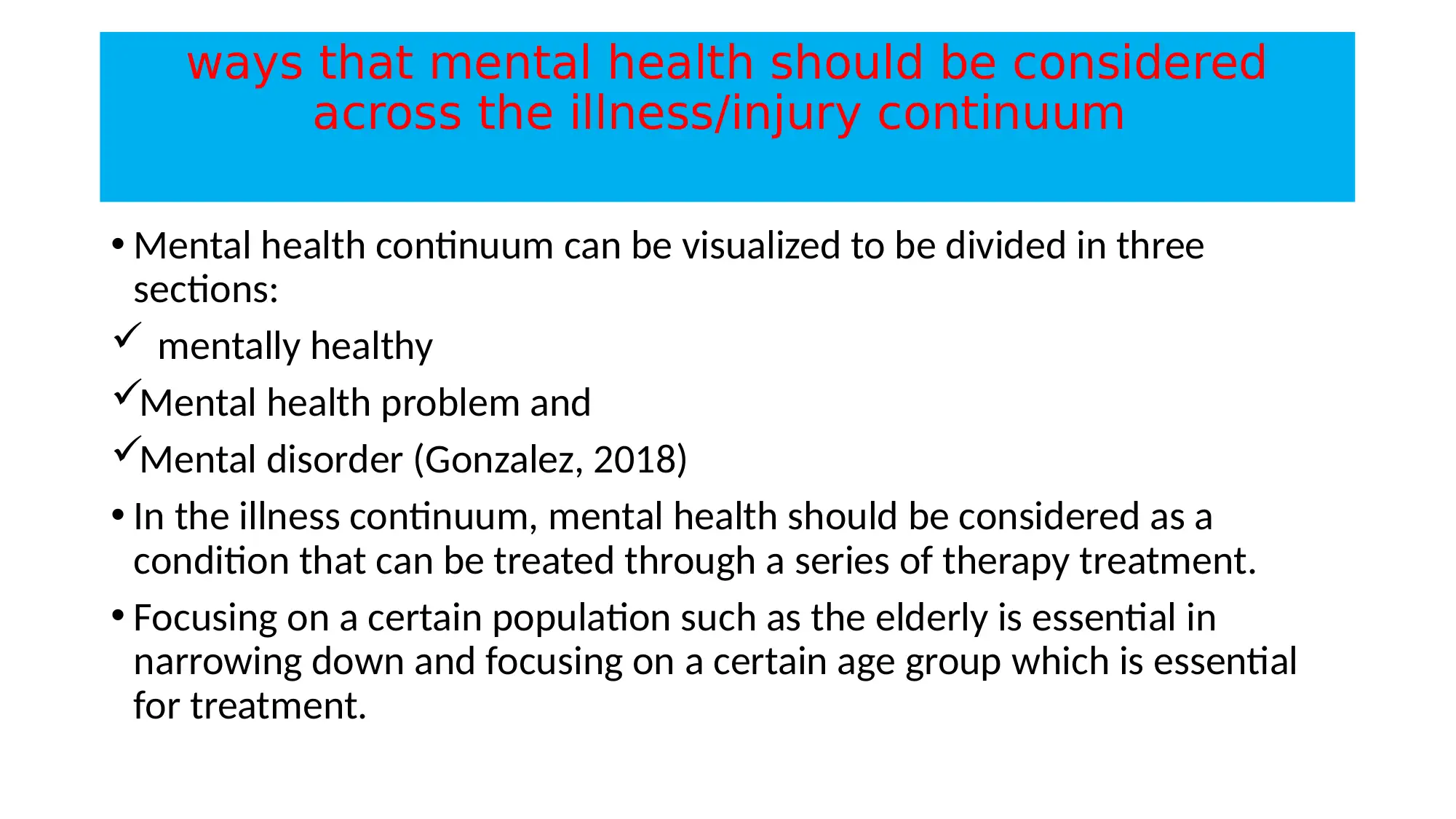
ways that mental health should be considered
across the illness/injury continuum
• Mental health continuum can be visualized to be divided in three
sections:
mentally healthy
Mental health problem and
Mental disorder (Gonzalez, 2018)
• In the illness continuum, mental health should be considered as a
condition that can be treated through a series of therapy treatment.
• Focusing on a certain population such as the elderly is essential in
narrowing down and focusing on a certain age group which is essential
for treatment.
across the illness/injury continuum
• Mental health continuum can be visualized to be divided in three
sections:
mentally healthy
Mental health problem and
Mental disorder (Gonzalez, 2018)
• In the illness continuum, mental health should be considered as a
condition that can be treated through a series of therapy treatment.
• Focusing on a certain population such as the elderly is essential in
narrowing down and focusing on a certain age group which is essential
for treatment.
⊘ This is a preview!⊘
Do you want full access?
Subscribe today to unlock all pages.

Trusted by 1+ million students worldwide
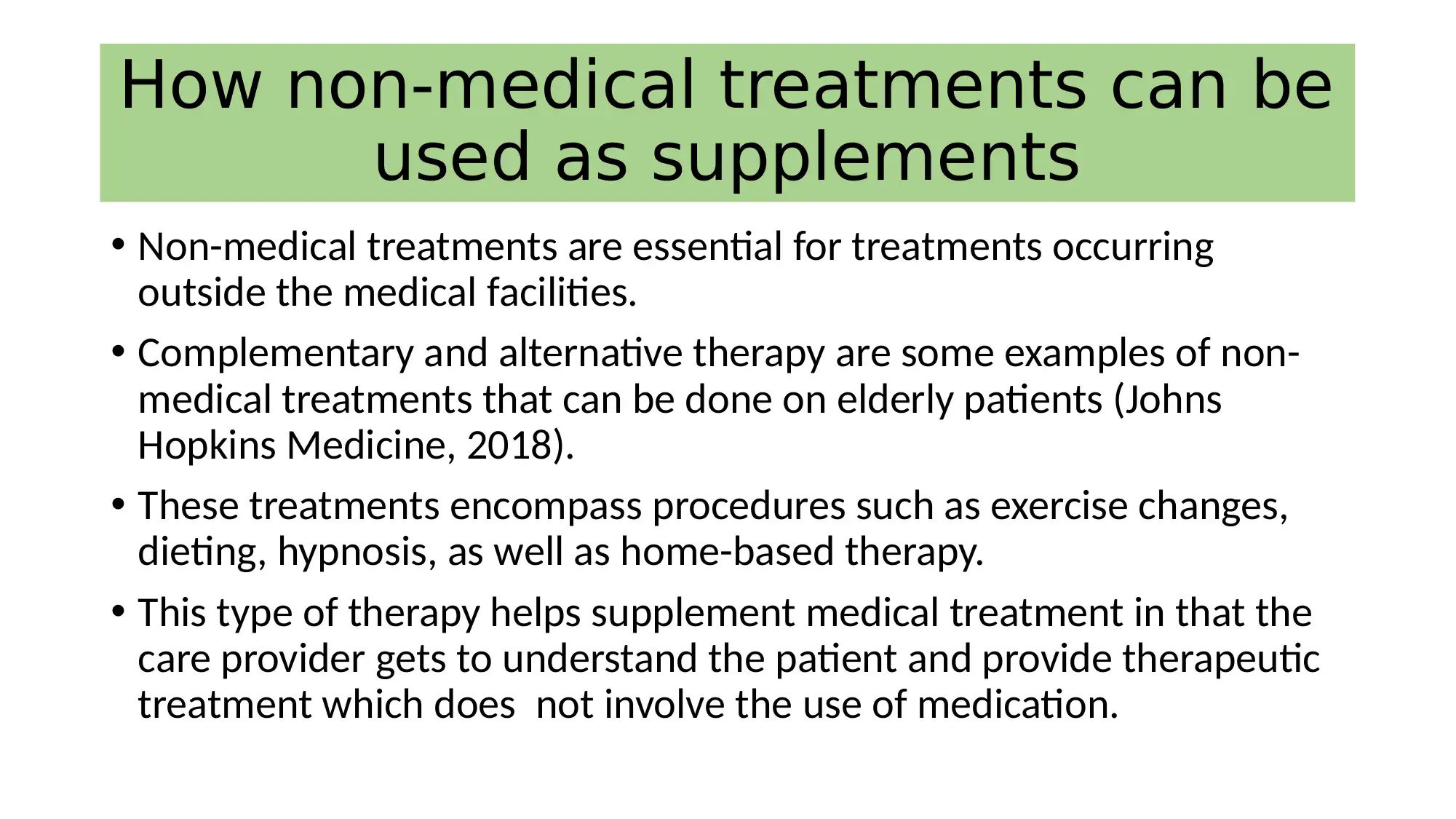
How non-medical treatments can be
used as supplements
• Non-medical treatments are essential for treatments occurring
outside the medical facilities.
• Complementary and alternative therapy are some examples of non-
medical treatments that can be done on elderly patients (Johns
Hopkins Medicine, 2018).
• These treatments encompass procedures such as exercise changes,
dieting, hypnosis, as well as home-based therapy.
• This type of therapy helps supplement medical treatment in that the
care provider gets to understand the patient and provide therapeutic
treatment which does not involve the use of medication.
used as supplements
• Non-medical treatments are essential for treatments occurring
outside the medical facilities.
• Complementary and alternative therapy are some examples of non-
medical treatments that can be done on elderly patients (Johns
Hopkins Medicine, 2018).
• These treatments encompass procedures such as exercise changes,
dieting, hypnosis, as well as home-based therapy.
• This type of therapy helps supplement medical treatment in that the
care provider gets to understand the patient and provide therapeutic
treatment which does not involve the use of medication.
Paraphrase This Document
Need a fresh take? Get an instant paraphrase of this document with our AI Paraphraser
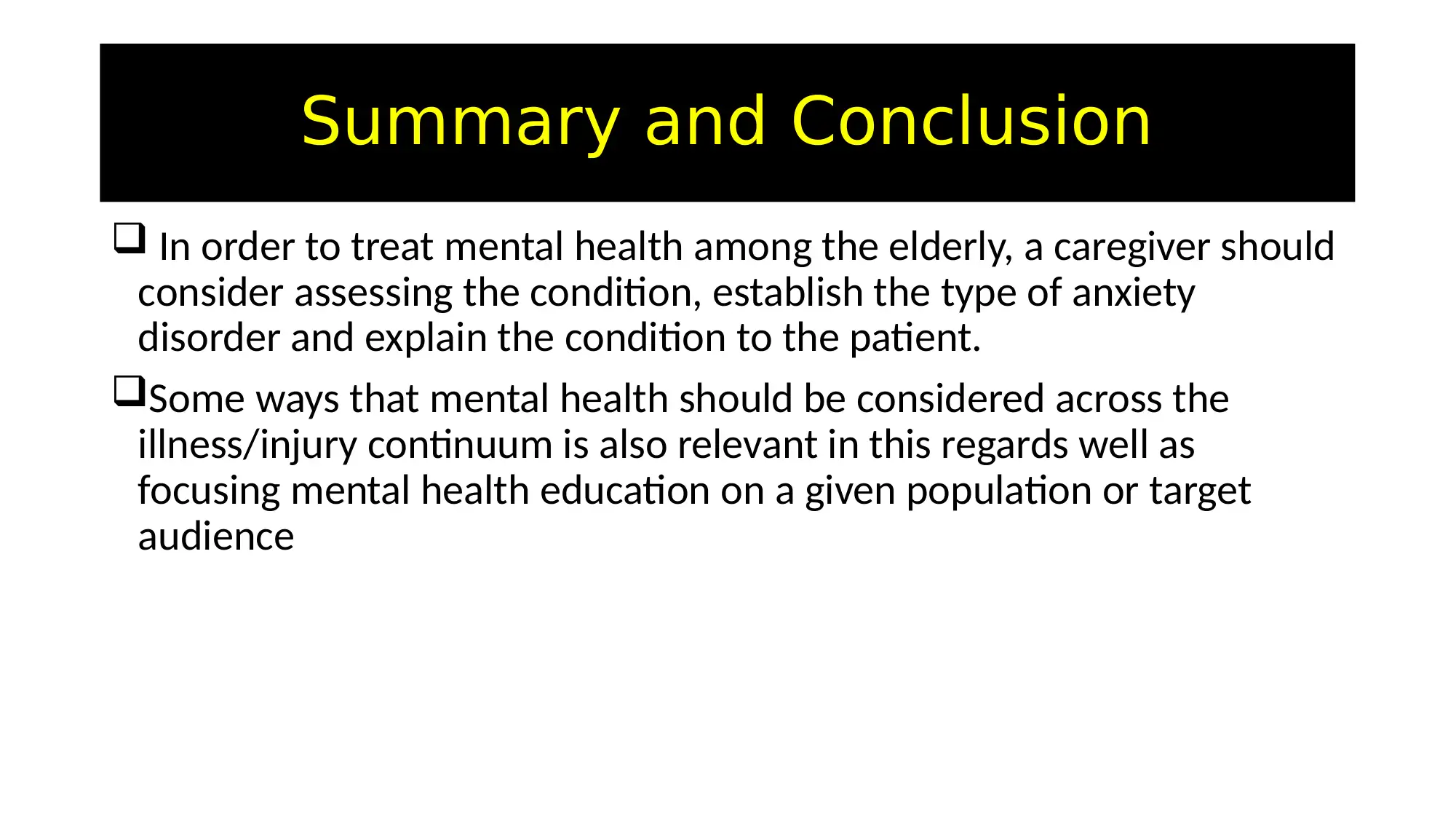
Summary and Conclusion
In order to treat mental health among the elderly, a caregiver should
consider assessing the condition, establish the type of anxiety
disorder and explain the condition to the patient.
Some ways that mental health should be considered across the
illness/injury continuum is also relevant in this regards well as
focusing mental health education on a given population or target
audience
In order to treat mental health among the elderly, a caregiver should
consider assessing the condition, establish the type of anxiety
disorder and explain the condition to the patient.
Some ways that mental health should be considered across the
illness/injury continuum is also relevant in this regards well as
focusing mental health education on a given population or target
audience
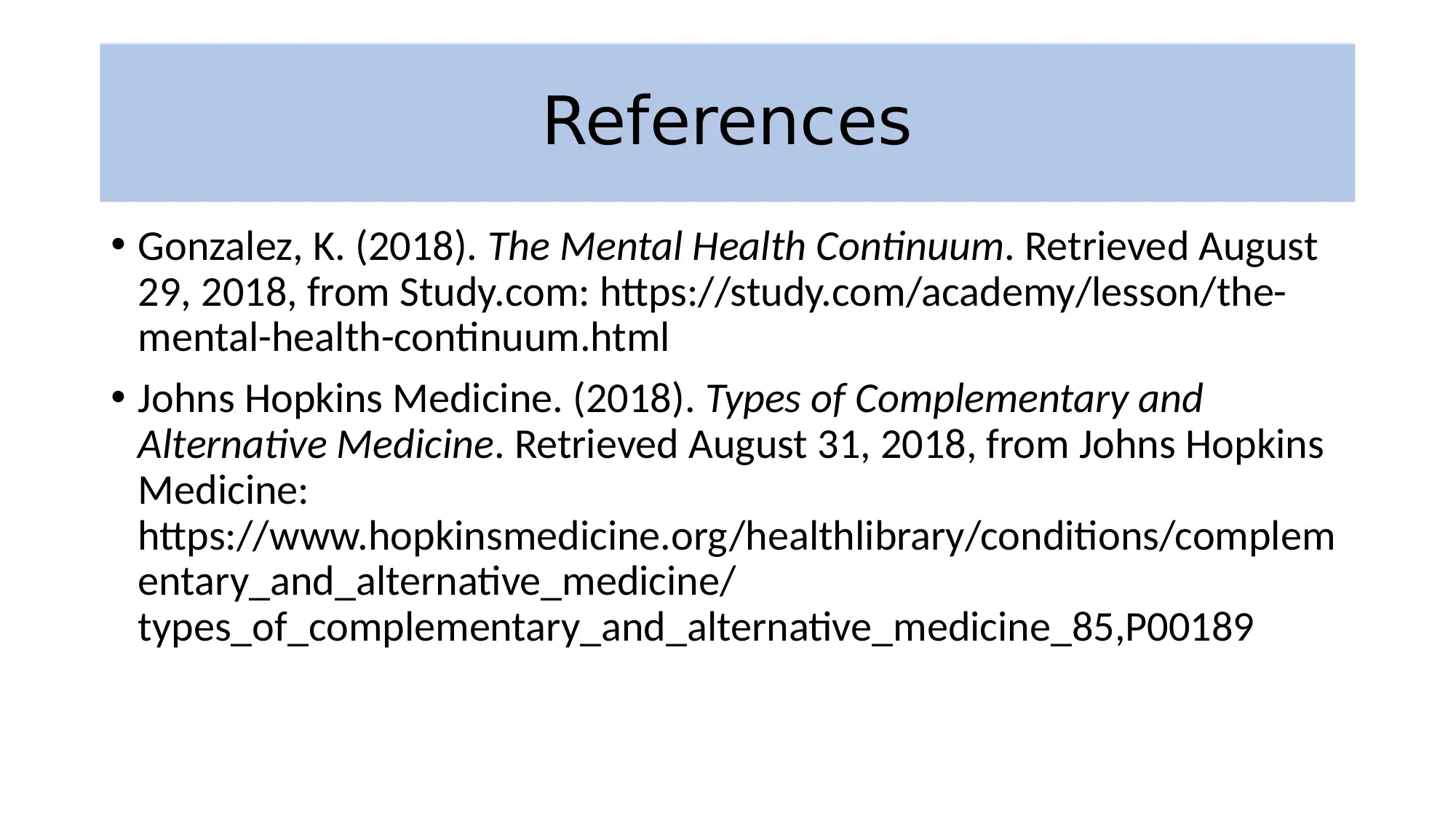
References
• Gonzalez, K. (2018). The Mental Health Continuum. Retrieved August
29, 2018, from Study.com: https://study.com/academy/lesson/the-
mental-health-continuum.html
• Johns Hopkins Medicine. (2018). Types of Complementary and
Alternative Medicine. Retrieved August 31, 2018, from Johns Hopkins
Medicine:
https://www.hopkinsmedicine.org/healthlibrary/conditions/complem
entary_and_alternative_medicine/
types_of_complementary_and_alternative_medicine_85,P00189
• Gonzalez, K. (2018). The Mental Health Continuum. Retrieved August
29, 2018, from Study.com: https://study.com/academy/lesson/the-
mental-health-continuum.html
• Johns Hopkins Medicine. (2018). Types of Complementary and
Alternative Medicine. Retrieved August 31, 2018, from Johns Hopkins
Medicine:
https://www.hopkinsmedicine.org/healthlibrary/conditions/complem
entary_and_alternative_medicine/
types_of_complementary_and_alternative_medicine_85,P00189
⊘ This is a preview!⊘
Do you want full access?
Subscribe today to unlock all pages.

Trusted by 1+ million students worldwide
1 out of 13
Related Documents
Your All-in-One AI-Powered Toolkit for Academic Success.
+13062052269
info@desklib.com
Available 24*7 on WhatsApp / Email
![[object Object]](/_next/static/media/star-bottom.7253800d.svg)
Unlock your academic potential
Copyright © 2020–2025 A2Z Services. All Rights Reserved. Developed and managed by ZUCOL.





